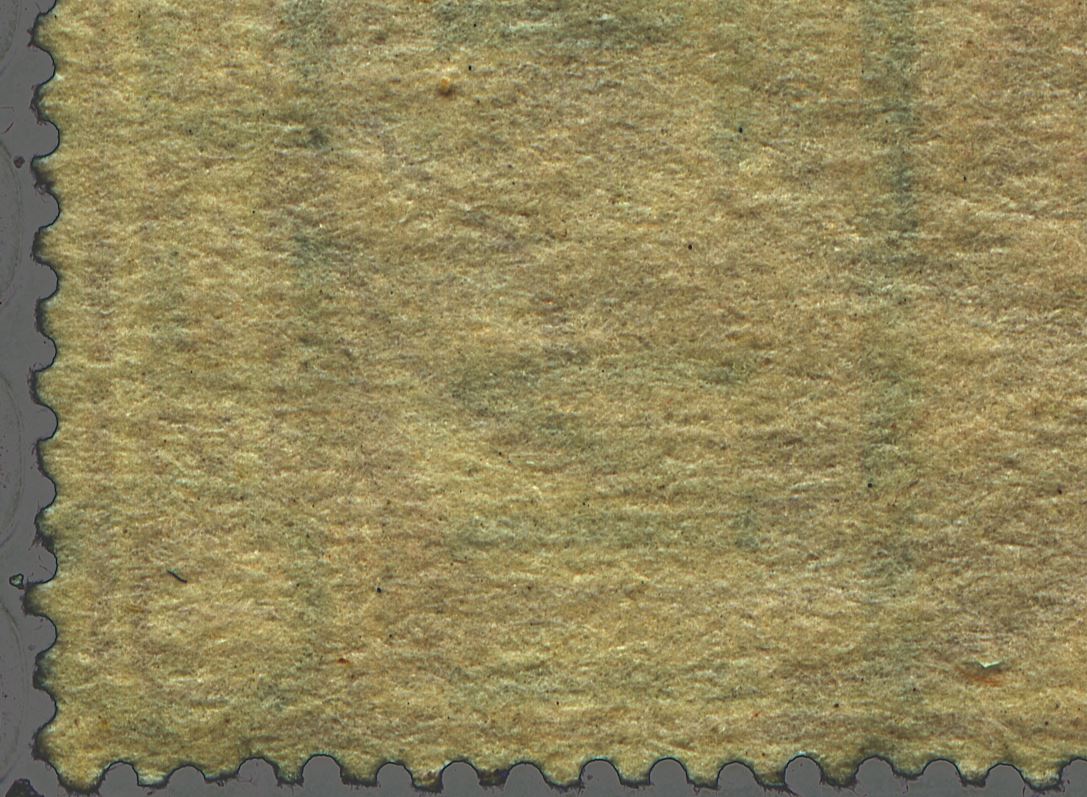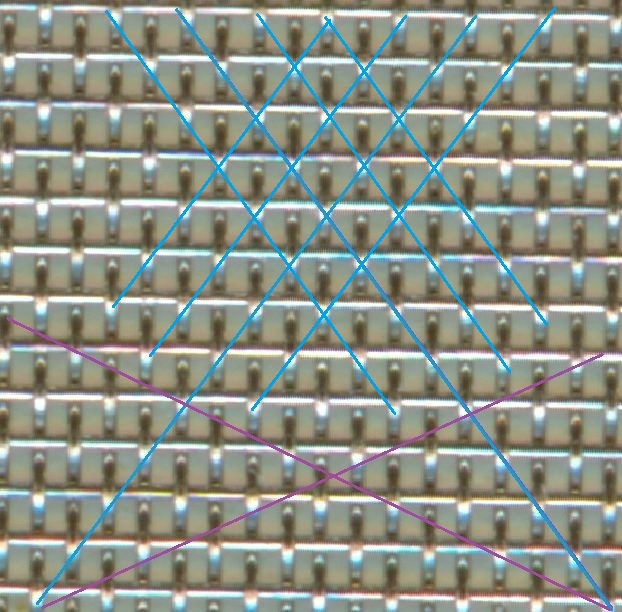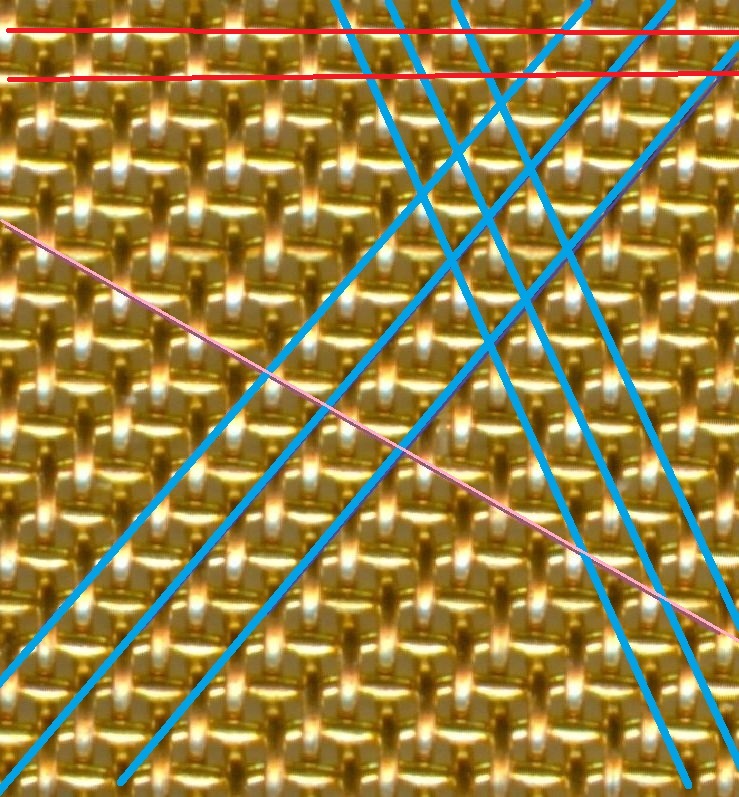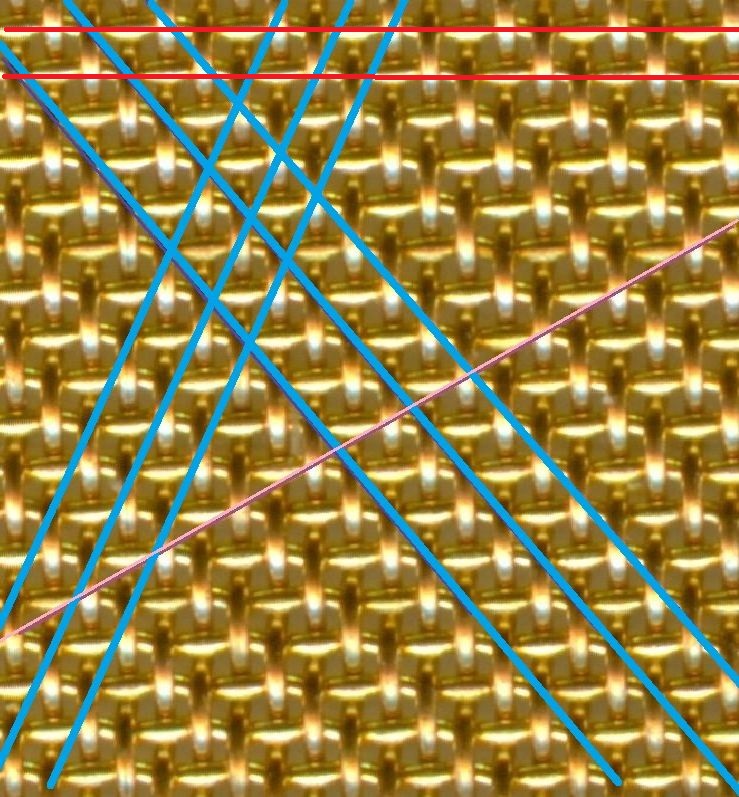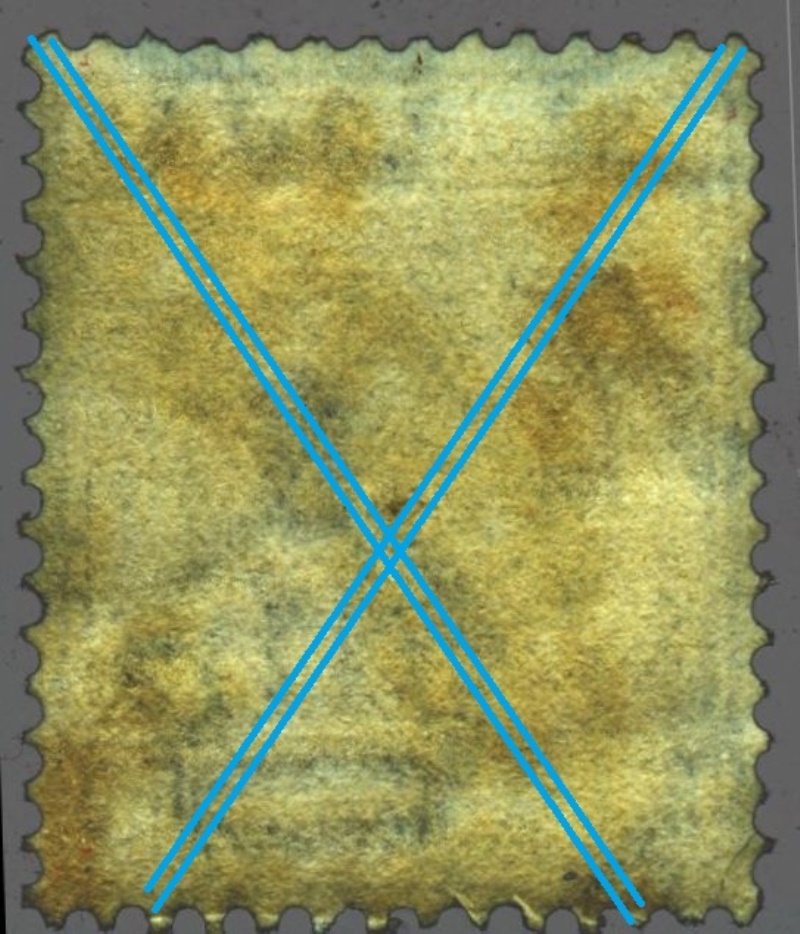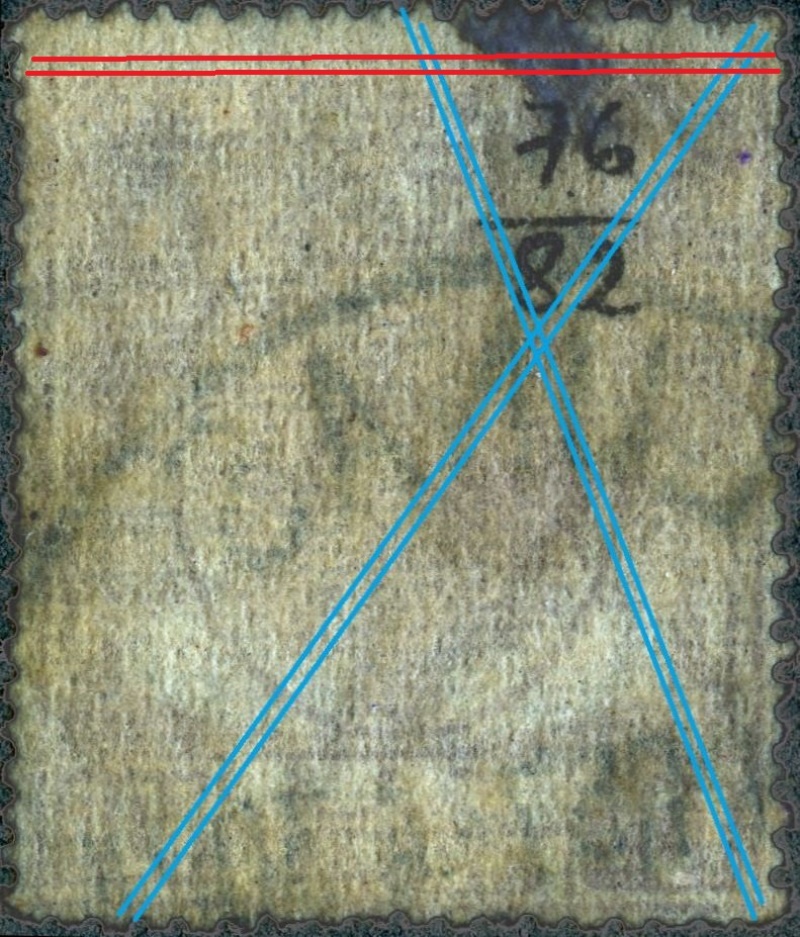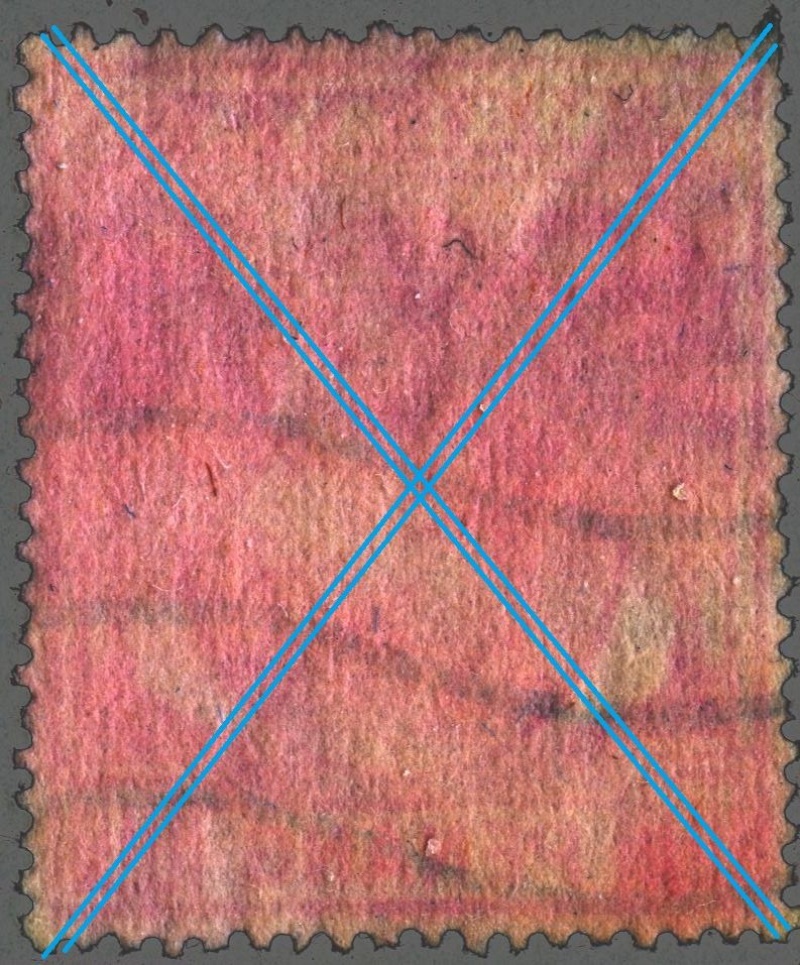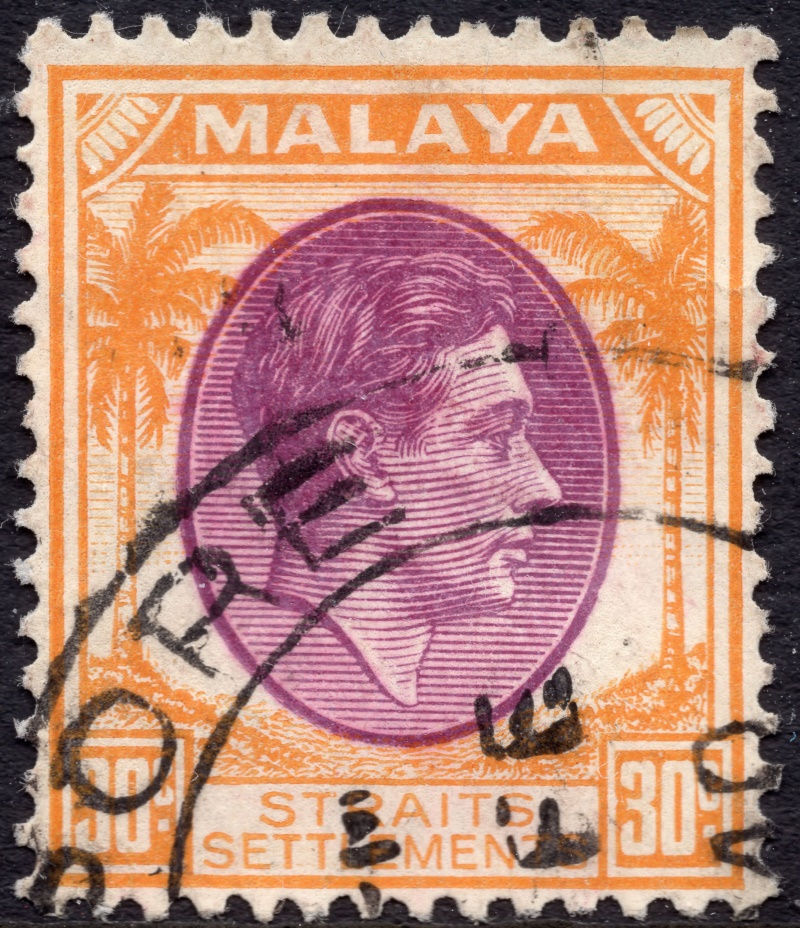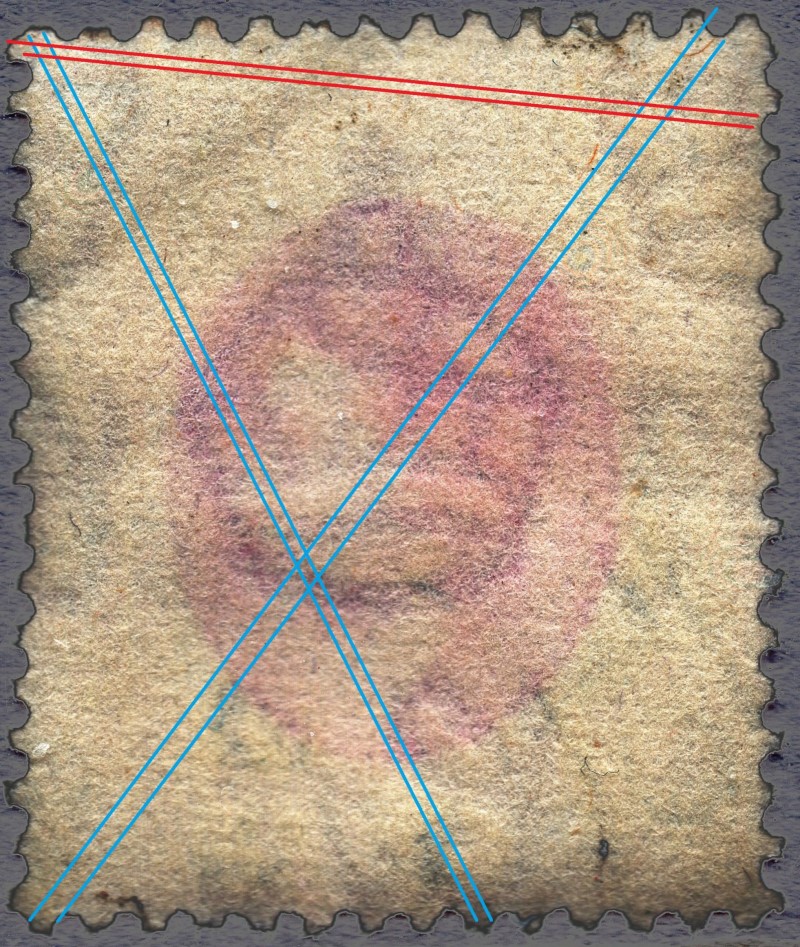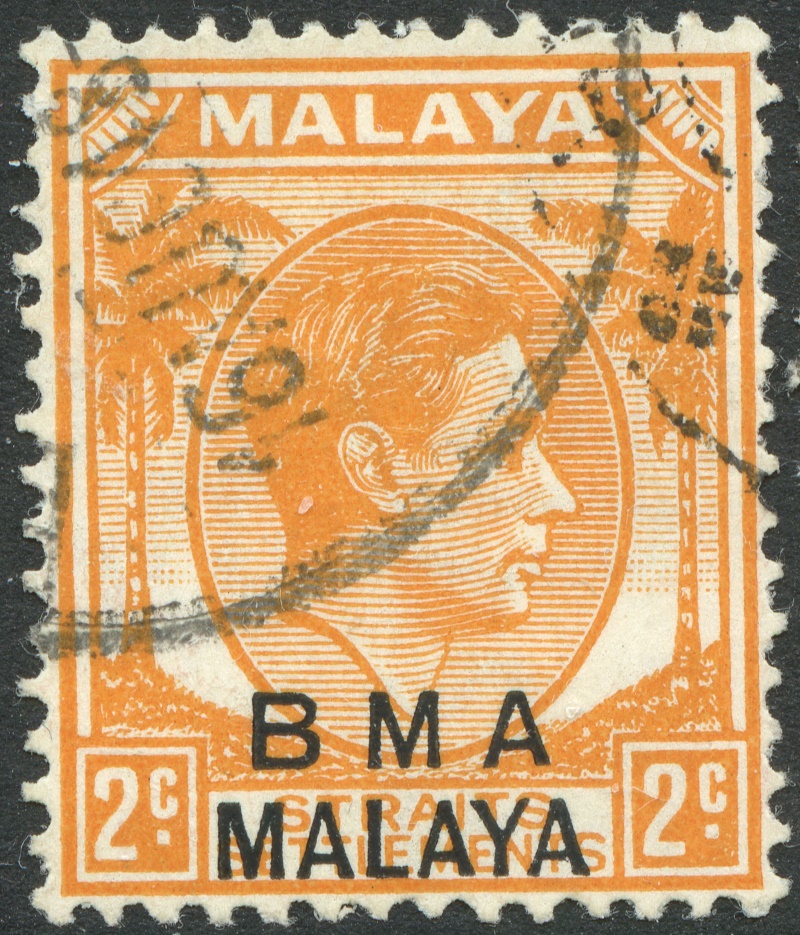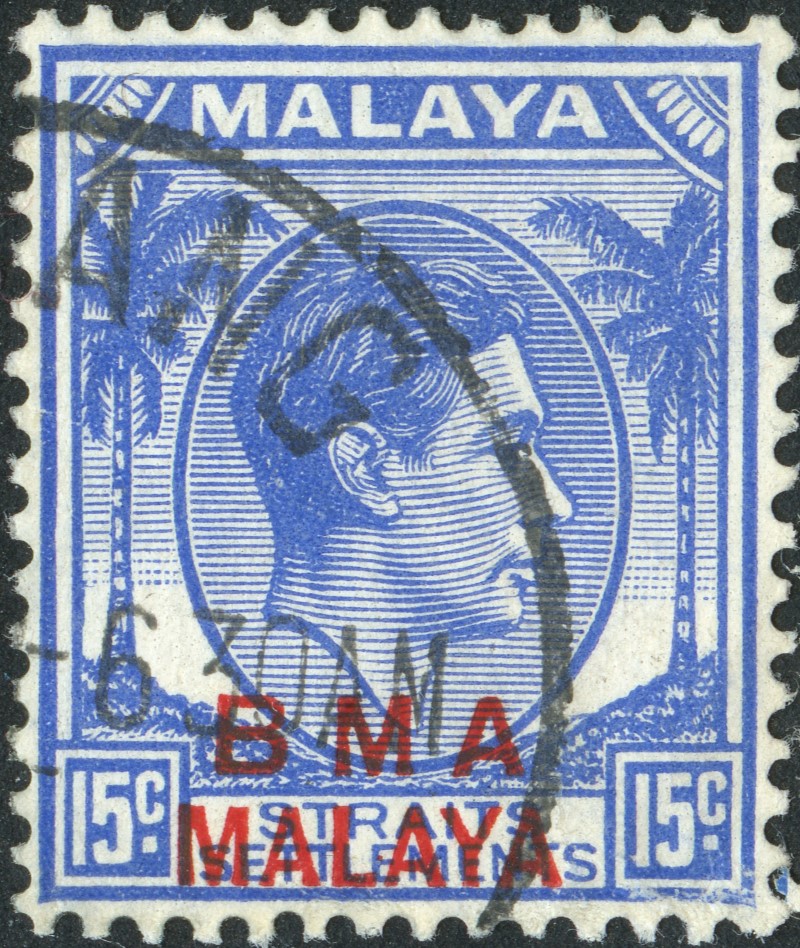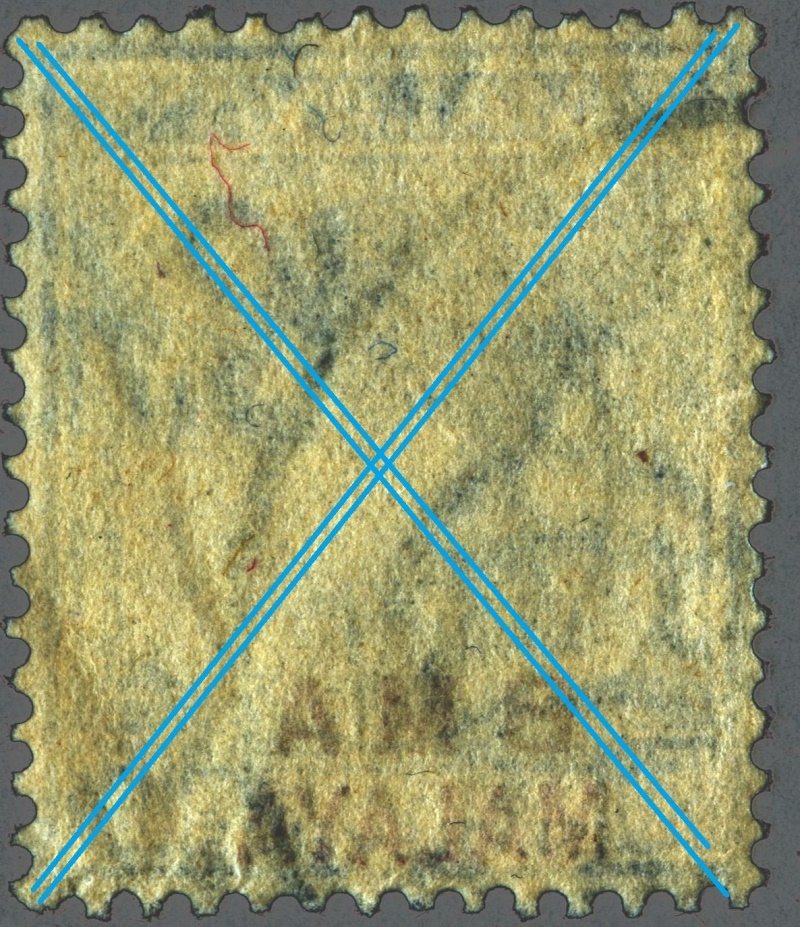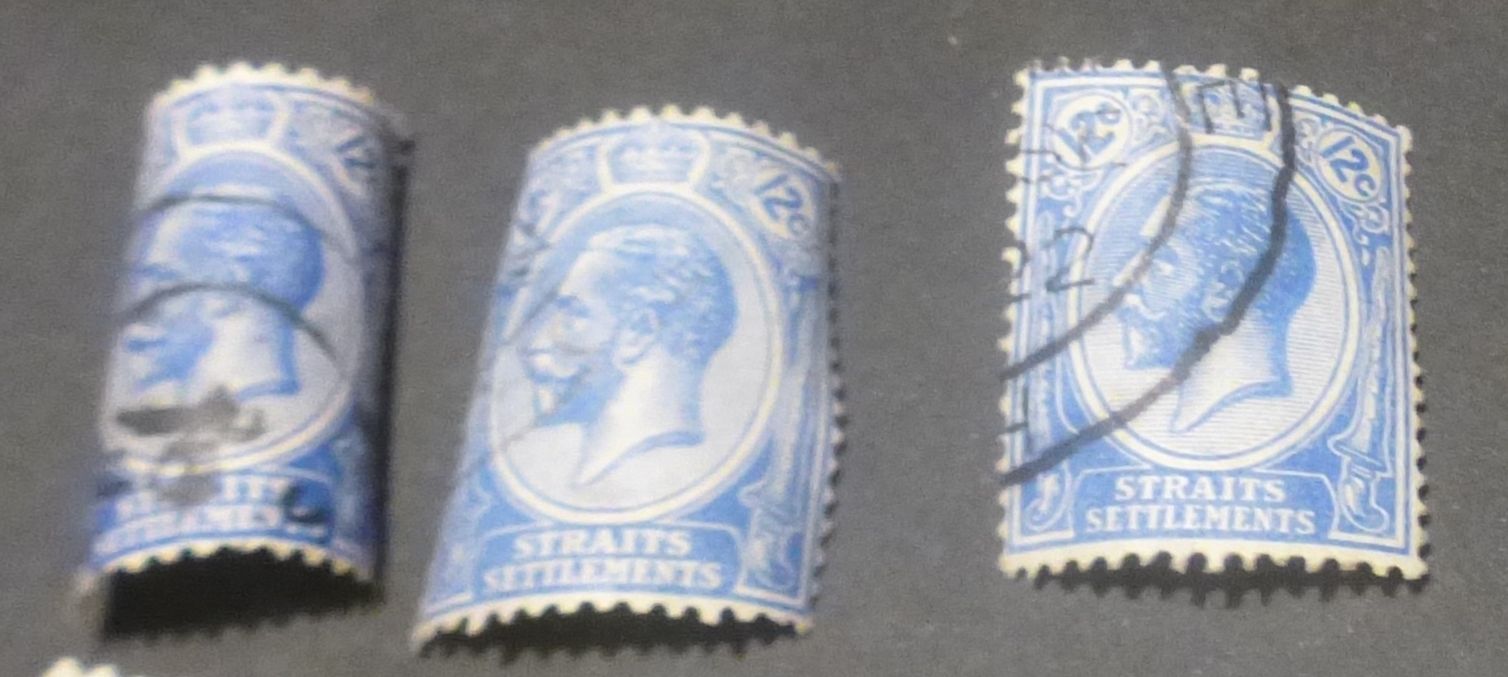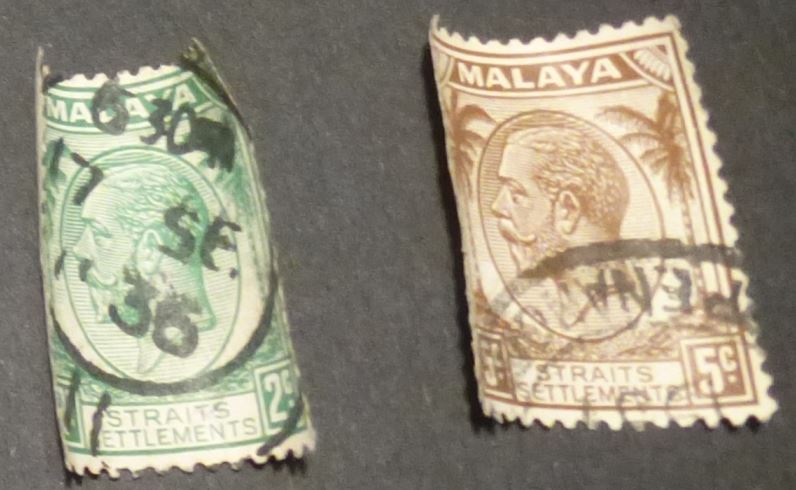Weave patterns
The impression of this fine weave - the pattern left on the paper by the sieve - was recognized by early collectors and described s "wove" paper. It resembles a pattern of rhomboids.
NB the "laid" paper can NOT originate from either type of paper machine but might come from a later stage of preparing the paper for their final destination. ALL stamp paper are "wove" in that respect. Another term used by philatelists is "mesh".
The weave comes either from the "long wire" OR from the sieve wrapped around the cylinder of the "round sieve". The weave is often visible a the back of a stamp BUT can also be found at the front. I.e. the sieve side got printed upon.
Studying stamp paper and having a particular stamp in your hand, the first thing to do is establishing the direction of paper of the grain. In a rectangular size stamp it can either be vertical or horizontal. What to look for? While in the paper making process, the fibers of the pulp eventually "choose" a preferred direction like flowing wooden logs in a river! As the heavier fibers sink towards the wire / sieve, we will find "grooves" where these fibers were before they got "torn" off .
